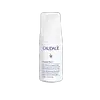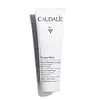What's inside
What's inside
 Key Ingredients
Key Ingredients

 Benefits
Benefits

 Concerns
Concerns

 Ingredients Side-by-side
Ingredients Side-by-side

Water
Skin ConditioningGlycerin
HumectantCoco-Glucoside
CleansingCaprylyl/Capryl Glucoside
CleansingMandelic Acid
AntimicrobialVitis Vinifera Fruit Water
Skin ConditioningSodium Levulinate
Skin ConditioningP-Anisic Acid
MaskingSodium Phytate
Citrus Paradisi Fruit Extract
Skin ConditioningPaeonia Lactiflora Root Extract
Skin ConditioningSodium Hydroxide
BufferingPapain
Skin ConditioningCitric Acid
BufferingVitis Vinifera Juice
Antioxidant1,2-Hexanediol
Skin ConditioningCaprylyl Glycol
EmollientCarbomer
Emulsion StabilisingSodium Benzoate
MaskingAlgin
MaskingPotassium Sorbate
PreservativeParfum
MaskingWater, Glycerin, Coco-Glucoside, Caprylyl/Capryl Glucoside, Mandelic Acid, Vitis Vinifera Fruit Water, Sodium Levulinate, P-Anisic Acid, Sodium Phytate, Citrus Paradisi Fruit Extract, Paeonia Lactiflora Root Extract, Sodium Hydroxide, Papain, Citric Acid, Vitis Vinifera Juice, 1,2-Hexanediol, Caprylyl Glycol, Carbomer, Sodium Benzoate, Algin, Potassium Sorbate, Parfum
Water
Skin ConditioningGlycerin
HumectantCoco-Caprylate/Caprate
EmollientSorbitan Stearate
EmulsifyingGlyceryl Stearate Se
EmulsifyingCetearyl Alcohol
EmollientTriheptanoin
Skin ConditioningSodium Acrylate/Sodium Acryloyldimethyl Taurate Copolymer
Emulsion StabilisingCetyl Alcohol
EmollientSilica
AbrasiveSqualane
EmollientVitis Vinifera Seed Oil
EmollientPalmitoyl Grapevine Shoot Extract
AntioxidantC15-19 Alkane
SolventGlycolic Acid
BufferingBisabolol
MaskingBenzyl Alcohol
PerfumingSodium Hydroxide
BufferingCitric Acid
BufferingCaprylyl Glycol
EmollientLactic Acid
BufferingXanthan Gum
EmulsifyingPolyglyceryl-6 Laurate
EmulsifyingArginine
MaskingPaeonia Lactiflora Root Extract
Skin ConditioningTartaric Acid
BufferingPolyglycerin-6
HumectantHelianthus Annuus Seed Oil
EmollientTocopherol
AntioxidantSorbitan Oleate
EmulsifyingGlucose
HumectantDehydroacetic Acid
PreservativeSorbitan Isostearate
EmulsifyingAcer Saccharum Extract
Skin ConditioningCarbomer
Emulsion StabilisingSodium Phytate
Papain
Skin Conditioning1,2-Hexanediol
Skin ConditioningAlgin
MaskingCitrus Limon Peel Oil
MaskingParfum
MaskingWater, Glycerin, Coco-Caprylate/Caprate, Sorbitan Stearate, Glyceryl Stearate Se, Cetearyl Alcohol, Triheptanoin, Sodium Acrylate/Sodium Acryloyldimethyl Taurate Copolymer, Cetyl Alcohol, Silica, Squalane, Vitis Vinifera Seed Oil, Palmitoyl Grapevine Shoot Extract, C15-19 Alkane, Glycolic Acid, Bisabolol, Benzyl Alcohol, Sodium Hydroxide, Citric Acid, Caprylyl Glycol, Lactic Acid, Xanthan Gum, Polyglyceryl-6 Laurate, Arginine, Paeonia Lactiflora Root Extract, Tartaric Acid, Polyglycerin-6, Helianthus Annuus Seed Oil, Tocopherol, Sorbitan Oleate, Glucose, Dehydroacetic Acid, Sorbitan Isostearate, Acer Saccharum Extract, Carbomer, Sodium Phytate, Papain, 1,2-Hexanediol, Algin, Citrus Limon Peel Oil, Parfum
 Reviews
Reviews

Ingredients Explained
These ingredients are found in both products.
Ingredients higher up in an ingredient list are typically present in a larger amount.
1,2-Hexanediol is a synthetic liquid and another multi-functional powerhouse.
It is a:
- Humectant, drawing moisture into the skin
- Emollient, helping to soften skin
- Solvent, dispersing and stabilizing formulas
- Preservative booster, enhancing the antimicrobial activity of other preservatives
Algin is brown algae. Algae is an informal term for a group of aquatic organisms that can photosynthesize. It is estimated there are at least 30,000 types of Algae.
Algae contains antioxidants. Antioxidants help fight free-radicals. Free-radicals are molecules that may damage your skin cells, such as pollution.
Caprylyl Glycol is a humectant and emollient, meaning it attracts and preserves moisture.
It is a common ingredient in many products, especially those designed to hydrate skin. The primary benefits are retaining moisture, skin softening, and promoting a healthy skin barrier.
Though Caprylyl Glycol is an alcohol derived from fatty acids, it is not the kind that can dry out skin.
This ingredient is also used as a preservative to extend the life of products. It has slight antimicrobial properties.
Learn more about Caprylyl GlycolCarbomer is a polymer of acrylic acid. Its main role is to create a gel consistency.
A high amount of carbomer can cause pilling or balling up of products. Don't worry, most products contain 1% or less of carbomer.
Citric Acid is an alpha hydroxy acid (AHA) naturally found in citrus fruits like oranges, lemons, and limes.
Like other AHAs, citric acid can exfoliate skin by breaking down the bonds that hold dead skin cells together. This helps reveal smoother and brighter skin underneath.
However, this exfoliating effect only happens at high concentrations (20%) which can be hard to find in cosmetic products.
Due to this, citric acid is usually included in small amounts as a pH adjuster. This helps keep products slightly more acidic and compatible with skin's natural pH.
In skincare formulas, citric acid can:
While it can provide some skin benefits, research shows lactic acid and glycolic acid are generally more effective and less irritating exfoliants.
Most citric acid used in skincare today is made by fermenting sugars (usually from molasses). This synthetic version is identical to the natural citrus form but easier to stabilize and use in formulations.
Read more about some other popular AHA's here:
Learn more about Citric AcidGlycerin is already naturally found in your skin. It helps moisturize and protect your skin.
A study from 2016 found glycerin to be more effective as a humectant than AHAs and hyaluronic acid.
As a humectant, it helps the skin stay hydrated by pulling moisture to your skin. The low molecular weight of glycerin allows it to pull moisture into the deeper layers of your skin.
Hydrated skin improves your skin barrier; Your skin barrier helps protect against irritants and bacteria.
Glycerin has also been found to have antimicrobial and antiviral properties. Due to these properties, glycerin is often used in wound and burn treatments.
In cosmetics, glycerin is usually derived from plants such as soybean or palm. However, it can also be sourced from animals, such as tallow or animal fat.
This ingredient is organic, colorless, odorless, and non-toxic.
Glycerin is the name for this ingredient in American English. British English uses Glycerol/Glycerine.
Learn more about GlycerinWe don't have a description for Paeonia Lactiflora Root Extract yet.
Papain is an enzyme found naturally in the papaya plant's leaves, fruit, and roots. It has antimicrobial, soothing, and wound healing properties.
Glycine and Vitamin A are naturally found in papain.
While papain is often touted as skin-lightening, further studies are needed to prove this. However, papain has been shown to help soothe acne-inflammation.
Papain belongs to a class of enzymes called proteolytic enzymes. These enzymes break down peptides and amino acids.
Some studies found papain to be a potential skin sensitizer and allergen. Those with latex allergies might also be allergic to papaya.
Learn more about PapainParfum is a catch-all term for an ingredient or more that is used to give a scent to products.
Also called "fragrance", this ingredient can be a blend of hundreds of chemicals or plant oils. This means every product with "fragrance" or "parfum" in the ingredients list is a different mixture.
For instance, Habanolide is a proprietary trade name for a specific aroma chemical. When used as a fragrance ingredient in cosmetics, most aroma chemicals fall under the broad labeling category of “FRAGRANCE” or “PARFUM” according to EU and US regulations.
The term 'parfum' or 'fragrance' is not regulated in many countries. In many cases, it is up to the brand to define this term.
For instance, many brands choose to label themselves as "fragrance-free" because they are not using synthetic fragrances. However, their products may still contain ingredients such as essential oils that are considered a fragrance by INCI standards.
One example is Calendula flower extract. Calendula is an essential oil that still imparts a scent or 'fragrance'.
Depending on the blend, the ingredients in the mixture can cause allergies and sensitivities on the skin. Some ingredients that are known EU allergens include linalool and citronellol.
Parfum can also be used to mask or cover an unpleasant scent.
The bottom line is: not all fragrances/parfum/ingredients are created equally. If you are worried about fragrances, we recommend taking a closer look at an ingredient. And of course, we always recommend speaking with a professional.
Learn more about ParfumSodium Hydroxide is also known as lye or caustic soda. It is used to adjust the pH of products; many ingredients require a specific pH to be effective.
In small amounts, sodium hydroxide is considered safe to use. However, large amounts may cause chemical burns due to its high alkaline.
Your skin has a natural pH and acid mantle. This acid mantle helps prevent harmful bacteria from breaking through. The acid mantle also helps keep your skin hydrated.
"Alkaline" refers to a high pH level. A low pH level would be considered acidic.
Learn more about Sodium HydroxideSodium Phytate is the synthetic salt form of phytic acid. Phytic acid is an antioxidant and can be found in plant seeds.
Sodium Phytate is a chelating agent. Chelating agents help prevent metals from binding to water. This helps stabilize the ingredients and the product.
Water. It's the most common cosmetic ingredient of all. You'll usually see it at the top of ingredient lists, meaning that it makes up the largest part of the product.
So why is it so popular? Water most often acts as a solvent - this means that it helps dissolve other ingredients into the formulation.
You'll also recognize water as that liquid we all need to stay alive. If you see this, drink a glass of water. Stay hydrated!
Learn more about Water